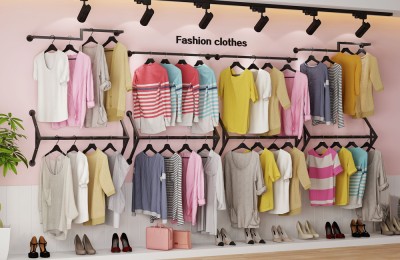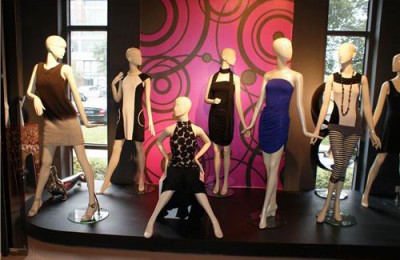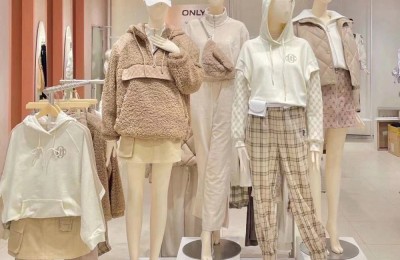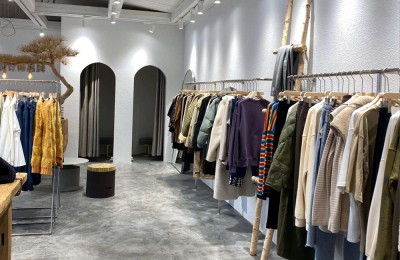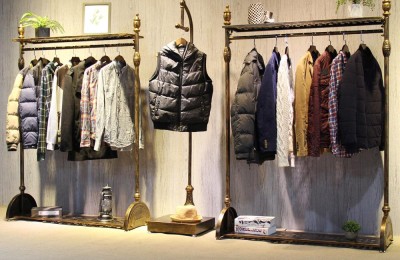At present, major textile giants are eyeing the field of high-end functional fabrics. Qingmao, Hengli, and Lutai have also launched high-end functional fabric projects.
On January 6, 2020, the groundbreaking ceremony of Hengli Fashion Industrial Park was held. The project is located in the Sucheng Canal Suqian Port Industrial Park, with a planned total investment of 23 billion yuan to build projects with an annual output of 1.2 million tons of differentiated super-simulation functional chemical fibers and an annual output of 1 billion meters of functional fabrics. It is mainly engaged in differentiated super-simulation functions. The production and sales of high-end polyester filaments and high-end fabrics create a whole industry chain from a piece of yarn to a piece of cloth.
On January 3, 2020, Shengzhou City and Zhejiang Qingmao Textile signed a project in Shaoxing to produce 100 million meters of high-end functional new textile materials per year. The total investment of the project is about US$75 million. After it is put into operation, it will have the annual production capacity of 100 million meters of high-end functional new textile materials. The total output value is expected to reach 1.5 billion yuan and the tax revenue will be more than 80 million yuan. After the completion of the project, it will effectively promote the high-end, branded, clustered and ecological development of the tie and apparel industry in Shengzhou City, and promote Shaoxing City to accelerate the construction of “Chinese Silk Highland”.
On March 28, 2019, the launch ceremony of Luthai Group’s Functional Fabrics Smart Ecological Park was held. The total investment of the project is approximately 2.5 billion yuan, using AGV smart vehicles and manipulators to build an intelligent manufacturing smart park, a green processing ecological park and an industrial upgrade demonstration innovation park. After the project is fully put into operation, it can achieve an annual output of 100 million meters of high-end functional fabrics, an annual income of 2.5 billion yuan, and create employment for 3,000 people, realizing the new needs of the transformation and upgrading of Lutai and the transformation of old and new driving forces.
In the past few years, as the competition in the fashion industry has become increasingly fierce, the homogeneity of products has become increasingly obvious. Conventional products only Can rely on the brand to enhance added value and thereby increase profits. However, since last year, with the changes in consumer attitudes, the premium of the brand has been further weakened, which was most evident in 2019. In this industry background, clothing brands and fabric manufacturers are constantly seeking new blue ocean markets. In the process of seeking, we discovered that functional fabrics may become a new blue ocean.
In recent years, the functional fabric industry has undoubtedly become a new growth point in the textile industry. From the appearance, functional fabrics may be exactly the same as ordinary fabrics, except that some fabrics have special treatments, and the finishing process can be seen at a glance, such as printing, bright PU, bronzing, etc. Although many functional fabrics have an ordinary appearance, the value of functional fabrics is more about increasing the added value of the fabric, and its scope is not limited to the sports and outdoor fields.
The editor roughly divides functional fabrics into three categories according to needs: comfort, environmental protection, and technology.
Comfortable functional fabrics have been widely used
Comfortable functional fabrics generally have the following functions: antibacterial, anti-mite, anti-mildew, anti-virus, anti-mosquito, flame-retardant, water-repellent and oil-repellent, anti-UV, moisture-absorbent and quick-drying, sweat-wicking, anti-static, etc. wait. The production technology of comfortable functional fabrics has long been mature, and it is currently the most used category in the clothing industry.
For example, the mountaineering clothing that has become popular in recent years can be said to be made of comfortable functional fabrics. A four-sided elastic film material produced by Aurora Composite Finishing, which is breathable and moisture-permeable through the finishing film and coating process. It solves the hot and humid feeling caused by sweating when mountaineering, and with the strong stretchability of four-sided elasticity, this type of mountaineering clothing can play its role even more.
Environmentally friendly functional fabrics have become a popular theme
Environmental protection is one of the most popular theme fabrics at the moment. The current environmentally friendly fabrics are more environmentally friendly fibers, and the environmentally friendly functions of post-finishing are weak. The most common environmentally friendly recycled fiber is made from waste plastic bottles, but there are also special fibers that can protect the environment. Such as recycled polyester fabrics, nano bamboo charcoal fiber fabrics, natural fiber fabrics, etc.
Tutech has been developing new fabrics and never stopped, especially in environmentally friendly technology for the market. Outstanding contribution. It developed a DuPont™ SORONA®The high-quality material Susterra(R) 1.3-propylene glycol accounts for 23% of the waterproof and breathable TPU membrane by weight. It has the performance of energy saving and carbon reduction, achieving true environmental protection and reproducibility.
Technological functional fabrics lead the diversified development of the industry
Technological fabrics have also emerged in endlessly in recent years, and many of them are Powerful “black technology” function. For example, fabrics with functions such as far-infrared energy storage heating, anti-cutting, intelligent temperature regulation, color changing and invisibility. There are many black technology fabrics, and their functions are beyond people’s imagination. Fabrics have developed into diversification and are no longer just as simple as a piece of clothing.
Although this year is a mild winter, the weather has turned cooler in recent days, so warm clothes are still very much needed. A graphene conductive film developed by Hanta Finishing has driven a sales boom. After the fabric is pasted with this film, it has anti-mildew, antibacterial, antistatic, conductive (resistivity), and far-infrared resistance functions, integrating multiple functions into one. In particular, the far-infrared function can radiate a temperature rise of 8°C and play the role of keeping warm, promoting blood circulation and removing blood stasis, anti-inflammatory and sterilizing.
Functional fabrics can be expected in the future: domestic demand of 50 billion yuan
After introducing so many functional fabrics, the editor has to say with emotion ” “Functional fabrics” are so powerful! According to incomplete statistics, 53.7% of companies have used functional textiles, which shows that functional fabrics have not yet become popular. But it can be seen from the market in 2019 that the trend of functional fabrics is becoming more and more obvious. The most popular products in 2019 are four-way elastic and T400 and T800. This type of elastic fabric can become a very good functional fabric through post-finishing processing. Clothing made from this type of functional fabric is hotly sold on e-commerce platforms such as Taobao. Therefore, this type of stretch fabric can be said to have been popular for nearly a whole year, and downstream textile companies are producing in this area.
The research and development of functional textiles has become an international trend and hot spot. Especially in Western countries, functional fabrics have occupied the international high-end market. For example, DuPont’s Supplex (softness of cotton, strength of nylon, anti-odor, windproof, quick-drying, water-permeable), Nike’s Driflt (fast-wicking microfiber), Reebok’s Hydromove (breathing drainage fiber, Temperature adjustment) etc.
Compared with developed countries, the popularity of functional textiles in my country still lags behind, but it is already developing. According to statistics, the global functional fabric market sales are US$50 billion per year. Some industry insiders point out that the functional textile market sales will increase every year in the future, and the domestic demand for functional textiles is also more than 50 billion yuan. .
Functional fabrics are a market with great potential and may become the next “blue ocean” of the textile industry. Textile companies can develop in the direction of functional fabrics, develop new technologies and new fabrics, increase product added value, and enhance competitiveness. In 2020, there may be different harvests!
</p



